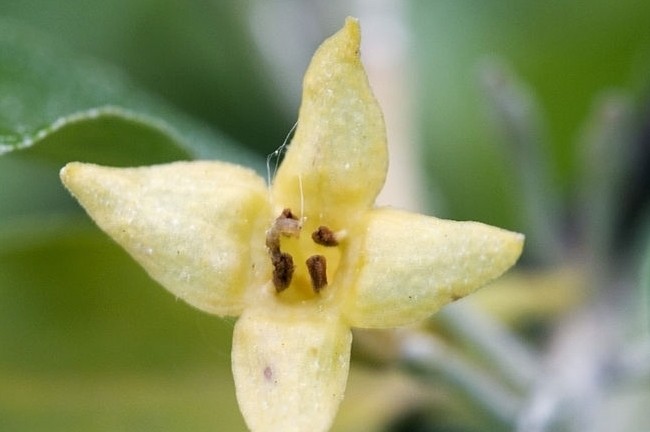Russian olive
(Elaeagnus triflora)

Description
Elaeagnus angustifolia, commonly called Russian olive, silver berry, oleaster, or wild olive, is a species of Elaeagnus, native to western and central Asia, Iran, from southern Russia and Kazakhstan to Turkey, parts of Pakistan and parts of India. As of 2020, it is widely established in North America as an introduced species. Its common name comes from its similarity in appearance to the olive (Olea europaea), in a different botanical family, the Oleaceae. Elaeagnus angustifolia is a usually thorny shrub or small tree growing to 5–7 m (16–23 ft) in height. Its stems, buds, and leaves have a dense covering of silvery to rusty scales. The leaves are alternate, lanceolate, 4–9 cm (1+1⁄2–3+1⁄2 in) long and 1.0–2.5 cm (3⁄8–1 in) broad, with a smooth margin. The highly aromatic flowers, produced in clusters of one to three, are 1 cm long with a four-lobed creamy yellow calyx; they appear in early summer and are followed by clusters of fruit, a small cherry-like drupe 1.0–1.7 cm (3⁄8–11⁄16 in) long, orange-red covered in silvery scales. The fruits are sweet, though with a dryish, mealy texture. The shrub can fix nitrogen in its roots, enabling it to grow on bare mineral substrates. The caterpillars of the high altitude alpine moth Lachana alpherakii use it as a host plant. The fruit is readily eaten and the seeds disseminated by many species of birds. The plants begin to flower and fruit from 3 years old. In Iran, the dried powder of the fruit is used mixed with milk for rheumatoid arthritis and joint pains. It is also one of the seven items which are used in Haft Seen or the seven 'S's which is a traditional table setting of Nowruz, the traditional Persian spring celebration. There is evidence supporting beneficial effects of aqueous extract of Persian olive in reducing the symptoms of osteoarthritis with an efficacy comparable to that of acetaminophen and ibuprofen. E. angustifolia has a long history of cultivation. It was described as Zizyphus cappadocica by John Gerard, and was grown by John Parkinson by 1633, and was also grown in Germany in 1736. It is now widely grown across southern and central Europe as a drought and cold-resistant ornamental plant for its scented flowers, edible fruit, attractive yellow foliage, and black bark.
Taxonomic tree:







